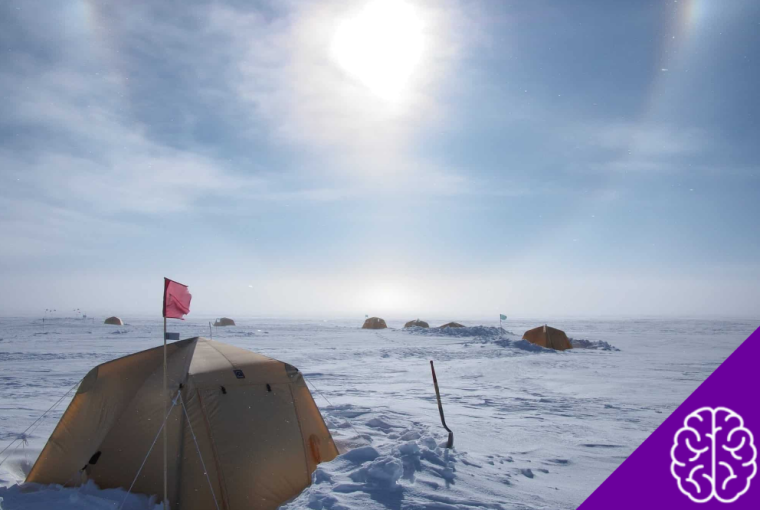Antarctica is one of the most remote, extreme, and unpopulated places on Earth. With its icy landscapes, sub-zero temperatures, and limited human settlements, it’s no surprise that the idea of someone being born there sparks curiosity.
But is it even possible for someone to be born in Antarctica? Has it happened? Let’s explore the fascinating answer to this unique question and uncover the intriguing stories tied to Antarctica’s history.
Can People Live in Antarctica Long-Term?
To understand if anyone has been born in Antarctica, it’s essential first to recognize the unique living conditions on this frozen continent. Antarctica isn’t a place where people reside permanently.
There are no cities, no hospitals in the traditional sense, or public living spaces. Instead, the continent is home to research stations operated by various countries.
These stations are temporary residences for scientists, researchers, and support staff conducting studies on topics like climate change, wildlife, and geology.
Though some research facilities are now operational year-round, the extreme conditions make living in Antarctica challenging.
Temperatures can drop below -80°F (-62°C), and the environment is isolated and uninhabitable for most life forms. This makes it an unlikely location for births to take place. However, that doesn’t mean it has never happened.
Has Anyone Been Born in Antarctica?
Surprisingly, the answer is yes—human beings have been born in Antarctica! While extremely rare, a select few individuals can claim this extraordinary birthplace.
The stories behind their births are fascinating and reflect unique historical and political circumstances.
Emilio Marcos Des Palma (Born in 1978)
The first known person born in Antarctica is Emilio Marcos Des Palma. Emilio made history when he was born at the Argentine Esperanza Base on the northern tip of the Antarctic Peninsula on January 7, 1978.
His parents were stationed at the base as part of a government initiative, with his mother traveling to Antarctica while pregnant.
Interestingly, Emilio’s birth was part of a deliberate effort by Argentina to stake a claim on the territory. At the time, Antarctica’s political landscape was (and still is) regulated by the Antarctic Treaty, which prohibits new territorial claims.
Countries like Argentina and Chile sought to demonstrate their presence on the continent, and the birth of a child served as a symbolic assertion of their sovereignty.
Juan Pablo Camacho Martino (Born in 1984)
Following Argentina’s example, a similar situation occurred in Chile. On November 21, 1984, Juan Pablo Camacho Martino became the first Chilean to be born in Antarctica.
His birth took place at the Chilean Eduardo Frei Montalva Base, furthering Chile’s symbolic presence on the icy continent.
Much like Emilio’s case, Juan Pablo’s birth was seen as part of Chile’s efforts to strengthen its connection to the Antarctic region.
The rare births in such an extreme environment underscored the lengths countries went to in their geopolitical strategies.
Are Babies Born There Today?
To date, fewer than a dozen babies have been born in Antarctica, with most instances occurring between the 1970s and 1980s during political efforts to cultivate territorial ties.
Today, births in Antarctica are practically unheard of, as research stations are not equipped with medical facilities for childbirth. Pregnant women are unlikely to be stationed on the continent, given the health risks and logistical complications.
Why Does Antarctica Have Such Strict Residency and Birth Policies?
Antarctica is governed by the Antarctic Treaty System, a unique international agreement that prioritizes scientific research and environmental preservation.
The treaty, which came into force in 1961, prohibits military activity, mineral mining, and permanent residency. It also declares Antarctica as a natural reserve dedicated to peace and science.
To ensure safety and compliance, there are strict controls on who can visit and live temporarily in Antarctica. These measures make sense, given the lack of infrastructure and harsh conditions.
This also extends to births, as the agreement’s focus on science and conservation doesn’t rely on permanent settlements or large human populations.
Fascinating Facts About Antarctica’s “Citizens”
Although individuals born in Antarctica cannot claim citizenship tied to the continent itself, they hold citizenship in the countries that manage the research bases where they were born.
For instance:
- Emilio Marcos Des Palma is an Argentine citizen, as he was born at his country’s research station.
- Juan Pablo Camacho Martino holds Chilean citizenship for the same reason.
- Antarctica remains a shared and cooperative space, governed by international partnerships without traditional borders or national sovereignty over any part of the land.
These extraordinary births serve as quirky stories of human history but are exceptions rather than the norm.
Why Births on Antarctica are Unlikely in the Future
There are several reasons why human births on Antarctica are rare and will likely remain so:
- Harsh Conditions: The weather and lack of healthcare infrastructure make it unsuitable for safe childbirth.
- Scientific Focus: With the continent focused on research and conservation, human settlement isn’t a priority.
- Environmental Concerns: A key goal of the Antarctic Treaty is to minimize human impact on the pristine environment. Encouraging permanent populations or facilities for childbirth could disrupt this balance.
The Uniqueness of Being Born in Antarctica
Being born in Antarctica is undeniably unique. Only a handful of people in human history have this claim to fame. It’s a conversation starter, a geopolitical statement, and a testament to the lengths humans will go to inhabit the most remote corners of the Earth, even temporarily.
While curious travelers may dream of experiencing life on the ice, it’s unlikely that Antarctica will become a destination for expecting parents. Instead, the continent will continue to thrive as a hub for scientific exploration, untouched wilderness, and international collaboration.
For now, the story of Antarctica stays as one of nature’s extremes—a place where life’s beginnings are rare but immensely fascinating.


